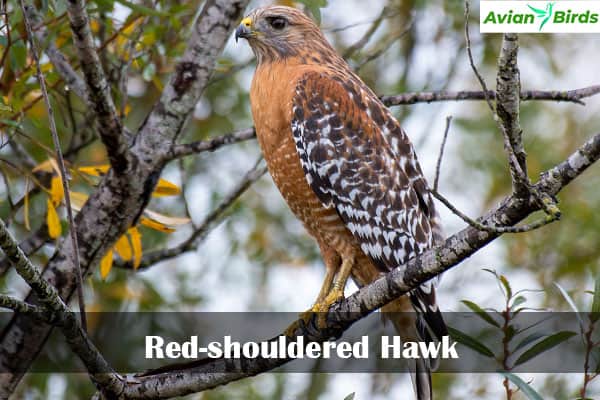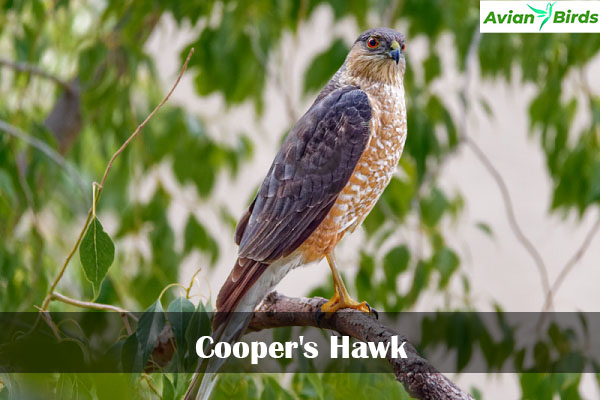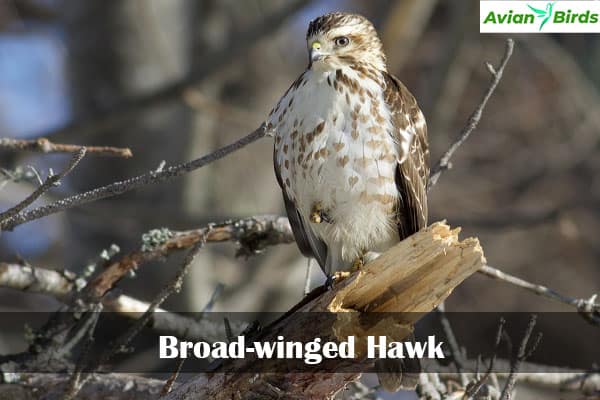10 Types of Hawks In Texas (ID Guide With Photos)
Ever wonder how many types of hawks live in Texas? Texas is a key spot for birds of prey because of its many habitats and migration paths. Among the 670 bird species in Texas, 19 hawks have been seen, with 15 seen often.
We’ll look at the unique traits and behaviours of these hawks. Each has something special, from the big Red-tailed Hawk to the striking Harris’s Hawk, and the impressive Rough-legged Hawk. Let’s dive into the world of hawks in Texas with amazing photos to show our journey.
Hawks and Their Habitat in Texas are diverse, supporting many species of hawks, owls, and other raptors.
Hawks are a fascinating part of Texas’s bird life. They live in the state’s many different places. Texas is huge, covering 268,820 square miles. It has woodlands, grasslands, prairies, and deserts, perfect for hawks.
There are about 670 bird species in Texas, including hawks like the Red-Shouldered Hawk. There are around 1.9 million birds in Texas, and the population grows by 2% each year.
Harris’s Hawks are also in Texas. They hunt in groups, making them interesting to watch. They live in the south and center of the state.
Big Bend National Park and Bentsen-Rio Grande Valley State Park are great for seeing hawks. Hawks help maintain a balanced environment and are important for Texas’s ecosystems.
What Makes Hawks Unique: Characteristics and Behavior
Hawks are amazing birds that fly high in the sky. They have big wings and cool feathers. For example, the Red-tailed Hawk’s feathers can be light or dark, depending on where it lives.
These birds can see really well from up high, which helps them find food. Hawks, like the Red-shouldered Hawk, use their eyes and ears to find small animals in the bushes. Others fly high to look for food in big fields.
Hawks also have special ways of building nests. The Red-shouldered Hawk makes a nest in a tree. It uses its wings to move around and find the right spot. Hawks also have their own areas for nesting and hunting, which helps them survive and raise their babies, making them important breeders in the ecosystem.
- Strong eyesight facilitates hunting precision.
- Varied plumage acts as camouflage in different habitats.
- Nesting strategies evolve with their environment.
- Territorial behaviours ensure access to resources.
Learning about hawks makes us appreciate them more. Their ways of hunting and living together shows how important they are in nature. We’ll discover even more about these amazing birds as we learn about different hawks in Texas.
1. Red-shouldered Hawk
The Red-shouldered hawk stands out in Texas with its striking looks and behaviours. Knowing how to spot it and where it lives helps us appreciate these birds more.

Identification and Distinct Features
The Red-shouldered hawk has unique traits for spotting. It’s medium-sized, with a length of 16.9 to 24 inches and a wingspan of 37 to 43.7 inches. Its breast has warm reddish bars and dark and white wings.
The tail is black with narrow white bands. Young hawks look different, with brown and white feathers. They all have pale crescents near their wingtips when flying.
Habitat and Range in Texas
Red-shouldered hawks live in forests, especially in areas with hardwoods and swamps. In Texas, they stay all year in certain areas. They are less common in South Texas during winter.
They breed from mid-February to late June. Also, They build nests with sticks and natural materials. They like moist areas near rivers and swamps for hunting.
Nationwide, their numbers are stable. They often use the same nest sites every year.
| Measurement | Range |
|---|---|
| Length | 16.9 to 24 inches |
| Wingspan | 37 to 43.7 inches |
| Breeding Season | Mid-February to Late June |
| Main Habitat Types | Forested areas, riparian corridors, and flooded swamps are crucial habitats for Texas birds, including various subspecies of hawks and other raptors. |
| Common Texas Regions | Pineywoods, Post Oak Savannah, Coastal Prairies |
2. Red-tailed Hawk
The Red-tailed Hawk is a famous bird in North America. It’s big and has unique features. Knowing about it helps us appreciate it more, especially in Texas.

Identification and Distinct Features
The Red-tailed Hawk is big and colourful. It’s 17.7 to 25.6 inches long and weighs 1.5 to 3.5 pounds. Its tail is reddish and gets more noticeable when it flies.
Its feathers can be dark brown or light tan. This helps it blend in with its surroundings.
- Size varies among the different species of hawks, including the large hawk and the short-tailed hawk.: 17.7 to 25.6 inches long
- Wingspan: 3 ft 7 in to 4 ft 8 in
- Weight: 1.5 to 3.5 lb
- Distinctive reddish tail
- Variable plumage colors
In Texas, we see these hawks flying or sitting on poles. They look for small mammals, birds, reptiles, and sometimes fish to eat.
Habitat and Range in Texas
Red-tailed Hawks live in many places in Texas. Also, They like deserts, grasslands, cities, and forests. They can be found up to 5,000 feet high.
They breed from late February to late June. Moreover, They pick high places to nest so they can see everything around them.
In winter, from mid-October to mid-March, they stay in Texas. The Texas Breeding Bird Atlas found many places where they breed. Since 1980, their numbers have grown a lot, contributing to the diversity of hawks and other raptors in the region.
There are 14 types of Red-tailed Hawks, alongside other species such as the White-tailed and Short-tailed Hawks. Each one lives in different places, including the habitats of the White-tailed and Rough-legged Hawks. This makes them very common in Texas. Their presence shows how rich our bird life is.
3. Harris’s Hawk
The Harris’s Hawk is a unique bird known for its social hunting. It is medium-sized, with dark brown feathers and reddish-brown accents. This hawk is special because it hunts in groups, often with up to seven birds.

Identification and Distinct Features
Here are some key features to identify the Harris’s Hawk:
- Adult birds have dark brown feathers with reddish-brown on wings and thighs.
- Young Harris’s Hawks have white patches and fine barring on wings and tails.
- They like to perch on poles, cacti, and fence posts for a good view.
- They soar with broad wings, often with their tails spread out.
Habitat and Range in Texas
Harris’s Hawks live in areas like woodlands and grasslands in Texas. They like places near water, making them easy to see in cities. Texas has many Harris’s Hawks, with sightings in 32 out of 41 areas.
Although their numbers have dropped slightly since 1980, they are still a favorite among birdwatchers in Texas, particularly the native species like the White-tailed Hawk.
4. Sharp-shinned Hawk
The Sharp-shinned Hawk is the smallest in North America. It is between 9.4 and 13.4 inches long. Its slender build and long tail make it very agile and fast.
It is great at catching small birds and insects. Its wings are short and rounded.

Identification and Distinct Features
The adult Sharp-shinned Hawk looks very striking, especially with its white rump. Its upper body is a slaty blue-gray color, and its breast has sharp, horizontal red-orange bars.
Young birds are brown with coarse vertical streaks on white underparts. Males are smaller than females, almost as big as a male Cooper’s Hawk. They have a unique flight pattern with quick wingbeats and short glides.
Habitat and Range in Texas
In Texas, Sharp-shinned Hawks breed from April to August, which is also the breeding season for many other hawks, including the White-tailed Hawk. However, their breeding population is at risk. They live at higher elevations in the western parts of the United States.
Even though they are rare in Texas, they can be seen during migration and winter, particularly in areas native to North Texas. Only 10 routes saw them in the Guadalupe Mountains, averaging less than one per route. They leave Texas by early May, affecting the local habitat.
| Feature | Details |
|---|---|
| Size | 9.4 to 13.4 inches in length |
| Adult Plumage | Slaty blue-grey with red-orange bars on the breast |
| Immature Plumage | Brown with coarse vertical streaks on white underparts |
| Breeding Season | April to August |
| Diet | Mainly small birds around the size of an American Robin |
| Clutch Size can vary, with some species like the White-tailed Hawk laying up to three eggs. | 4-5 smooth, off-white eggs |
| Incubation Period | 30-32 days |
We love birdwatching in Texas and seeing the Sharp-shinned Hawk. Its population is growing in the United States and Canada. This shows how strong this species is.
5. Cooper’s Hawk
The Cooper’s Hawk is a fascinating bird that stands out in the sky. It has blue-gray feathers on top and orange bars on its belly. Its way of flying, with a flap-flap-glide pattern, makes it easy to spot, especially in North Texas.

Identification and Distinct Features
Adult Cooper’s Hawks have gray backs and reddish chests. Their eyes are a bright red. They are about the same size as a crow.
There is a difference between males and females. Males are smaller. Young hawks, unlike sharp-shinned hawks, have brown feathers and a hooded look.
Habitat and Range in Texas
In Texas, Cooper’s Hawks are rare but can be found in wooded areas. Also, They like the Pineywoods, Edwards Plateau, and South Texas Brush Country. They breed from sea level up to 1500 meters.
They lay 3 to 4 eggs and incubate them for 30 to 46 days. The young leave the nest after 30 to 36 days. They are good at hunting birds and sometimes visit backyard feeders, attracting both falcons and owls.
| Attribute | Details |
|---|---|
| Average Wingspan | 24.4 to 35.4 inches |
| Breeding Status | Rare to locally uncommon in Texas |
| Egg Clutch Size | 3-4 eggs (2-5 range) |
| Incubation Period | 30-46 days |
| Fledging Age | 27-36 days after hatching |
| Wintering Range | Southern U.S. to Guatemala |
| Habitat Preferences | Wooded areas, parks, and subdivisions |
6. Swainson’s Hawk
The Swainson’s Hawk is a unique raptor. It has special features and behaviors. Knowing about this hawk helps us understand its role in Texas.

Identification and Distinct Features
The Swainson’s Hawk has broad wings and a long tail. Adults are about 19 inches long. Their dark flight feathers make their trailing edge dark, helping us spot them in flight.
Adult females have a bright chestnut bib. This makes them easy to tell apart from males.
These hawks mainly eat small mammals during breeding season. They soar over fields and grasslands, showing their hunting style.
Habitat and Range in Texas
In Texas, Swainson’s Hawks live in open prairies, plains, and cities. They nest in the High and Rolling Plains and the northern Edwards Plateau. These areas are good for their population.
They arrive in Texas in late March to mid-May. They breed from mid-February to August. Before, they were rare in places like the Pineywoods. Now, they are seen in cities like Dallas and Houston.
They start their southward migration in late July. This peaks from early August to early November, coinciding with the migration of several species, including falcons. Seeing them nest in cities shows how adaptable they are.
| Aspect | Details |
|---|---|
| Length | 19 inches |
| Breeding Season | Mid-February to August |
| Egg Laying Dates | March 1 to July 3 |
| Common Breeding Habitats | Grasslands, plains, urban areas |
| Migration Period | July 25 to November 12 |
| Typical Feeding Habits | Small mammals |
| Relative Abundance in Texas | 1-10 hawks per 40 km route |
7. Broad-winged Hawk
- Scientific Name: Buteo platypterus
- Size: 13–17 inches (34–43 cm) in length
- Weight: 9–20 ounces (260–570 grams)
- Lifespan: Up to 12 years in the wild
- Diet: Small mammals, birds, insects, reptiles, and amphibians
The Broad-winged Hawk, known as Buteo platypterus, is a sight in Texas skies. It is medium-sized, between 12 and 19 inches long. It is smaller than the Red-shouldered Hawk and is loved by bird watchers for its unique migration patterns, which are similar to those of other Texas birds.
Adult Broad-winged Hawks have reddish-brown heads and barred underparts. They also have bold black and white bands on their tails. Young hawks are lighter brown with coarse streaks on their underparts. Rare dark-morph adults are all dark sooty brown with banded tails.

In Texas, these hawks live in forests east of the Trinity River and in the Balcones Escarpment area. Urban areas have about one pair per 5 km², while rural areas have about one pair per 8 km². This shows that they are growing in central to north-central Texas.
Broad-winged Hawks are known for their big migrations. They often travel to Central America for the winter and form huge flocks as they fly south of Texas. In eastern Texas, these groups can have over 1,000 birds. They arrive in Texas between March 9 and April 15.
These hawks live in different forests, like mixed pine-hardwoods and oak-hickory forests. They are adaptable, which helps them thrive in Texas. Over time, we’ve seen them expand their range and increase their nesting sites.
| Identification Features | Adult | Juvenile | Dark Morph |
|---|---|---|---|
| Size | 12-19 inches | 12-19 inches | 12-19 inches |
| Head Color | Reddish-brown | Lighter brown | Dark sooty brown |
| Underparts | Barred | Coarse streaking | The banded tail is a distinctive feature among certain subspecies of hawks. |
| Habitat in Texas | Forest types | Forest types | Forest types |
In summary, the Broad-winged Hawk adds to our knowledge of Texas raptors. Their unique looks and migrations are fascinating. Seeing them in the wild shows us the beauty and variety of Texas wildlife.
8. Gray Hawk
- Scientific Name: Buteo plagiatus
- Size: 16–24 inches (41–61 cm) in length
- Weight: 14–19 ounces (400–550 grams)
- Lifespan: Up to 12 years in the wild
- Diet: Primarily small mammals, birds, lizards, and large insects
The Gray Hawks in Texas is a stunning bird with beautiful gray feathers. It’s a top pick for birdwatchers in Texas. Adults have a light gray head and a darker grey back. They also have a barred black-and-white tail, a characteristic seen in many hawk nests.
Young Gray Hawks look different. They have dark brown backs with brown streaks and spots on their belly.

In Texas, Gray Hawks live in mature woodlands and semi-arid mesquites. These places are perfect for nesting. They are found along the lower Rio Grande River, where they are usually hard to spot among the deciduous trees.
They fly low to the ground, unlike other hawks. Their flight is smooth, with short flaps and long glides.
Gray Hawks eat small lizards and other small animals. This food helps them stay strong. They breed from mid-April to July, building nests in trees.
A nest usually has two or three eggs. It takes about 32 to 34 days for the eggs to hatch, which is typical for hawks like the Rough-legged Hawk.
Female Gray Hawks are bigger than males. This is rare in hawks. After 42 days, the young hawks leave the nest. This is a big moment for them.
Even though they are not in danger, Texas sees them as Threatened. The U.S. Fish and Wildlife Service also watches them closely.
Learning about Gray Hawks helps us protect them. We see more of them in Texas and Arizona. We hope their numbers will keep growing.
9. Zone-tailed Hawk
- Scientific Name: Buteo albonotatus
- Size: 18–22 inches (46–56 cm) in length
- Weight: 19–33 ounces (540–940 grams)
- Lifespan: Up to 20 years in the wild
- Diet: Small mammals, birds, reptiles, and occasionally carrion
The Zone-tailed Hawk looks like a Turkey Vulture but is a bird of prey. This look helps it sneak up on its prey. In Texas, we see these hawks in open areas with trees, adding to the state’s bird variety.
In Texas, Zone-tailed Hawks breed in places like the Trans-Pecos and Edwards Plateau. They come to Texas from mid-March to mid-May, and their breeding season is from March to July. They nest in tall pines and cliffs by the Rio Grande.

From 1987 to 1992, we found breeding sites in the Guadalupe and Davis Mountains. The hawks lay 1 to 3 eggs. The parents watch the nest for 28 to 34 days. The young birds leave the nest after 41 to 53 days.
Zone-tailed Hawks are summer visitors in Texas. They eat birds, mammals, reptiles, and amphibians. We need to watch their habitat because of climate and development changes. There are fewer than 2,000 breeding pairs in the U.S., making them rare and important to protect.
10. Ferruginous Hawk
- Scientific Name: Buteo regalis
- Size: 22–27 inches (56–69 cm) in length
- Weight: 34–73 ounces (960–2,070 grams)
- Lifespan: Up to 20 years in the wild
- Diet: Primarily small mammals (like rabbits and ground squirrels), birds, and reptiles
The Ferruginous Hawk is the biggest hawk in North America. It can be seen in Texas skies. It has a wingspan of over 4 feet and rust-coloured feathers in some forms.
These largest hawks live in open areas like grasslands and prairies. Texas is perfect for them. They are mostly seen in the Panhandle and High Plains.

Nesting happens from March to July. They have been spotted nesting in Dallam and Moore counties. They might also nest in Bailey and Deaf Smith counties.
Ferruginous Hawks don’t breed south of the 31st parallel in the Osage Plains. They lay 2 to 4 white eggs. These eggs hatch after 32 to 33 days, similar to the incubation period of the White-tailed Hawk.
After hatching, the young stay in the nest for 38 to 50 days. This shows they are stable in Texas.
In winter, they migrate to Texas from the north. Some go to Mexico. They hunt by soaring and hovering, looking for rabbits and prairie dogs, much like the hunting techniques of the White-tailed Hawk and other native Texas birds.
| Aspect | Detail |
|---|---|
| Size | Wingspan: Up to 4 feet |
| Identification | Light morphs: White underparts; Dark morphs: Rufous-chocolate color |
| Nesting Season | March to July |
| Eggs | 2-4 creamy white eggs |
| Fledging Age | 38-50 days after hatching |
| Winter Range | Central and southern Texas, into Mexico, are also habitats for the native Rough-legged Hawk. |
Conservation is key for the Ferruginous Hawk in Texas. The U.S. Fish and Wildlife Service says they are a Category 2 Species. This means we must protect their homes to keep their numbers up.
Top Birding Sites for Hawks in Texas
Some of the best places in Texas for watching hawks are:
- Big Bend National Park
- Santa Ana National Wildlife Refuge
- Bentsen-Rio Grande Valley State Park
- Davis Mountains State Park
- Hagerman National Wildlife Refuge
- Laguna Atascosa National Wildlife Refuge
- Aransas National Wildlife Refuge
- Anahuac National Wildlife Refuge
- Brazos Bend State Park
- South Padre Island
These spots are great for seeing various hawks. Visitors can enjoy watching their impressive skills and behaviours. Whether you’re really into birds or just love nature, Texas is the place to watch these birds in action.
Read More🐦Related Articles:
- Eagles in Florida
- Doves in Illinois
- Herons of Texas
- Birds With Orange Beaks
- Michigan Duck Hunting Season
- White Birds in Florida
- Scary Bird Species
Conclusion
Hawks in Texas are very important for our environment. They help keep small animals, reptiles, and insects in check, keeping nature healthy.
Protecting hawks is crucial for Texas. We must save their homes and support local groups. This way, our kids can see these amazing birds, too.
Watching birds, especially hawks, is a great way to enjoy nature. It’s best to watch them early in the morning or just before sunset. This lets us see their special ways and learn more about them.
By loving hawks and other birds, we help our community. We learn and enjoy the beauty of Texas’s wildlife. Let’s keep exploring and caring for our feathered friends.







